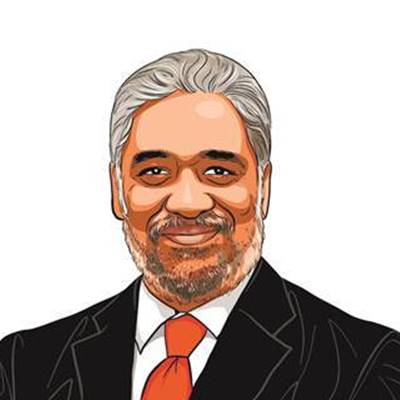Opinion A yam between two rocks
Scare-mongering about Nepals turn to China is overdone. India must stabilise Nepals politics and enlist Chinas help
It does not matter if the recent reports from Nepal that China is helping the Maoists buy political support and win the prime ministers post are true. As Nepals large neighbour to the north,China has always had considerable influence in Kathmandu. As its power rises,Chinas ability to influence the evolution of its immediate periphery in the subcontinent is growing rapidly.
Nor is new for Nepals Maoists to play the China card against India. After a brief period,in the wake of China winning control of Tibet in 1950,when it had a tight alliance with New Delhi,Kathmandu saw opportunities in playing the China card as Sino-Indian tensions in the late 1950s boiled over into a brief conflict in 1962.
Put simply,Nepals China card is nearly half a century old. All political parties in Nepal have played it whenever they wanted to improve their bargaining power vis-à-vis Delhi. Nepals elite has often described the nations geopolitical condition as a yam between two rocks.
Kathmandus China card is,indeed,a consequence of Indias primacy in Nepal,which in turn is rooted in geography,demography and history. As China rises,its importance for Nepal will continue to grow too; but Sino-Nepalese ties are unlikely to ever match the intensity and intimacy of India-Nepal ties. That,as Delhi knows,is at once an advantage and a disadvantage.
Actually,Indias current problems in Nepal have less to do with China than with the deep divisions within Nepals political class. Since the turn of the 1990s,when Nepal became democratic,its political leaders have failed to provide even a bit of political stability and a measure of decent governance. As every political formation quarrelled with itself and others,Indias special ties to Nepal repeatedly sucked it into Kathmandus political vortex. All the fractions in Kathmandu demand Indias support and deeply resent it when they dont get it.
The recent talk of Indias growing unpopularity,then,does not mean much. India has seen much worse before,for example after Prime Minister Rajiv Gandhi imposed a blockade when the Nepali monarchy played the China card in the late 1980s.
In any case,India is not in a beauty contest in Kathmandu. It must live with the reality that Nepals political classes want Indias help to resolve the current political deadlock and at the same time fear that Delhis intervention might go against their individual ambitions.
The question then is not whether India should intervene in Nepal,but when,how,and under what terms. Those decisions are not imminent,but they might not be too far away.
It was,after all,Indias diplomatic interventions that united the mainstream political parties and the Maoists against the monarchy in 2005,prevented the then king,Gyanendra,from unleashing a bloodbath against peaceful protestors in 2006,and promoted a peace accord for the integration of the Maoists into the mainstream of Nepals political life.
If it is Indias burden to assist Nepal in resolving its frequent internal crises,China is a free-rider that can deal with whoever is in power at any given time,and exploit the inevitable differences between Kathmandu and Delhi.
The diplomatic challenge for Delhi is to prepare for that moment when it will have to step in to resolve the crisis in Nepal. Indias political leadership,including the current one,tends to ignore Nepal until a fleeting headache becomes an unbearable migraine.
For the moment,though,Delhi is staring at three possible futures in Kathmandu. Under the first,the current stalemate between the Maoists and the mainstream political parties will continue,and the present caretaker government will have no option but to govern for much longer than any one had anticipated.
Under the second scenario,the Maoists manage to draw a few more parliamentarians to its side,win the prime ministership and move quickly towards a one-party dictatorship. That the Maoists have not kept their word on giving up their instruments of coercion as part of the peace process is proof enough that their options are still open.
A third possibility is that Maoists will recognise after seven inconclusive rounds of voting for a new prime minister the importance of reassuring other political parties,giving up the instruments of violence,and joining the democratic process.
Delhis current diplomatic challenge is to prevent the second outcome and promote the third. There is no guarantee,however,that Delhi will succeed. To improve the chances of a peaceful resolution to the current deadlock,India must launch a sustained and intense engagement with all political parties in Nepal. While India cannot and should not write the script for that countrys political leaders,it must press vigorously for a political consensus in Kathmandu.
Delhi must also do its bit to make the international environment more favourable to the peace process. The United Nations Mission in Nepal (UNMIN) might have served as a valuable Shikhandi in the past,but it is no substitute to Delhis own consultations with the major powers.
India must also reach out to Beijing for a frank discussion on the political future of the Himalayan republic. Any settlement in Nepal that does not meet the interests of major powers,especially China,is unlikely to survive for too long. India must offer China a substantive dialogue on finding ways to stabilise their shared and turbulent periphery. Nepal might be a good place to start.
Finally,India must also encourage the Nepalese themselves to define a new vision for their nation. Situated between the worlds two fastest-growing economies,there is no reason for Nepal to remain one of the worlds poorest places.
If Kathmandu can produce a bit of political coherence at home and demonstrate a measure of economic purposefulness,Nepal can thrive as the Himalayan bridge between India and China.
raja.mohan@expressindia.com





